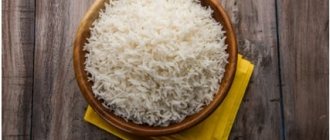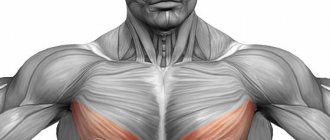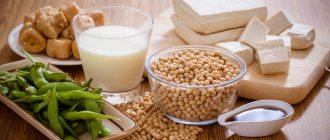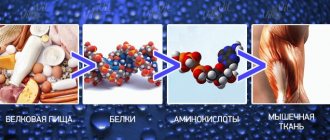Recently, infants often develop intolerance to mother's milk, that is, its protein. An allergy occurs, and the food is simply not digested by the baby. As a result, there is a shortfall in height and various ailments associated with this.
Especially for such children, manufacturers of therapeutic and preventive nutrition have created an infant formula - hydrolyzate, in which whey is divided into atoms by heat treatment and is easily absorbed into the cells of an allergic person.
Main types of mixtures based on protein hydrolyzate
Hydrolyzed foods are divided into two types:
- the first is casein hydrolysates;
- the second is whey protein hydrolysates.
The pediatrician assesses the severity of the disease and prescribes one of three types of formulas depending on the child’s condition. Based on the level of hydrolysis, manufacturers divide foods with split protein into three types:
- Highly hydrolyzed - which are used to treat severe food allergies to cow's milk protein. With this hydrolysis, whey is split into atoms that are absorbed by babies without any allergies.
- Partially hydrolyzed - used for the prevention of allergic diseases, the protein in it is not completely broken down, but the baby will not suffer from food allergies when consuming this product.
- Low hydrolysis - used by healthy babies for the purpose of prevention. It is indicated if the baby’s parents have a predisposition to allergies to dairy products or the baby has minor manifestations of allergies.
Kinds
Classification of protein hydrolysates is made according to 2 main criteria. Namely:
- By type of raw material - fish, soy, dairy, casein, whey, soy, meat, egg. Hydrolysis of protein waste from various industries is one of the effective ways of their disposal.
- According to the processing method - deep, medium (5-6 days) and low (5-72 hours) degree of breakdown (amino acid content of at least 50, 25 and 15%, respectively).
Cow's milk-based compounds (whole protein, curdled milk or whey) obtained by enzymatic digestion are most often used for the production of medicinal foods and therapeutic agents. Animal protein hydrolysates are used in microbiology, virology, and veterinary medicine. Soy products also have hypoallergenic and hypocholesterolemic properties.
Whey protein hydrolysates have an amino acid composition close to that of human muscle tissue, and in terms of the amount of essential amino acids they exceed all other types of raw materials of animal and plant origin.
What is the composition of a mixture with partially hydrolyzed protein?
In this product, whey is separated into olegopeptides using heat treatment in such a way as to be as close as possible to the protein composition of mother's milk. It is easily absorbed by the newborn's body and does not cause food allergies. The medicinal mixtures contain a minimal amount of salt, this facilitates the unhindered release of digested elements.
In addition to broken down protein, the mixture contains useful substances:
- Lactose, which promotes the colonization of the intestines with beneficial bacteria.
- Dextrin maltose promotes better absorption of calcium in the body.
- Nucleotides help an unprotected child’s body quickly form immunity.
- Omega-3 and Omega-6 help the brain and visual organs develop properly.
- Vitamins C and E help the body's cells.
- Calcium, phosphorus and vitamin D, due to their optimal content, are ideally absorbed by the body and help the formation of muscles and skeleton.
- L-arginine shapes the digestive and nervous system.
- Taurine promotes the formation of fiber and muscle tissue of the heart.
- Inositol is involved in the formation of respiratory functions and protects the baby from respiratory infections.
Best Whey Proteins
Ultimate Nutrition Prostar 100% Whey Protein
A high-quality protein mixture of concentrate and isolate is produced under a well-known American brand. The protein in the composition retained maximum useful qualities, as it was isolated using low-temperature technology without denaturation - splitting. The amino acid profile of the product fully meets the needs of both beginners and experienced athletes. One 30-gram serving contains 83% or 25 g of protein and only 1 and 2 g of fat and carbohydrates, respectively.
Advantages:
- careful processing of raw materials;
- average price tag;
- manufacturing company with a good reputation;
- glutamine in the composition;
- the presence of nonessential and essential amino acids;
- easy and complete dissolution without the formation of lumps.
Flaws:
- the taste characteristics of some types leave much to be desired;
- The consistency of the ready-to-serve cocktail is too thin.
BombBar Whey Protein
A distinctive feature of the product is the presence of appetizing pieces of fruit in the mixture, which qualitatively change the taste of the diluted additive. In addition to beneficial fruit fractions, the protein contains vitamin C, which strengthens the immune system, and fiber, which improves digestion. A serving of concentrate includes 20 g of protein, 2 g of fat and carbohydrates.
Advantages:
- the presence of fruits that improve the taste of the cocktail;
- enrichment with vitamin C;
- packaging for 30 servings;
- saturation after administration lasts for about 3 hours.
Flaws:
- poorly soluble;
- It's better to cook in a shaker.
Geneticlab Nutrition Whey Pro
Whey concentrate from a Russian company includes 24.8 g of protein per 33 g serving. The manufacturer has its own laboratory, where pharmacologists develop the most useful and balanced composition of supplements. The variety of flavors available for purchase will satisfy even gourmet athletes.
Advantages:
- mixes well in a shaker or using a blender;
- pleasant taste that even demanding girls like;
- quite filling;
- quickly accelerates the gain of the required weight;
- good protein profile;
- extremely affordable price.
Flaws:
- watery consistency.
R-Line Whey
A domestically produced product with excellent value for money, presented in the form of a powder based on whey protein concentrate. The composition is supplemented with a vitamin-mineral complex, flavorings and is not burdened with sugar, preservatives or dyes. One 181 kcal serving contains 6.7 g of carbohydrates, 30 g of protein, which is broken down within 30 minutes after consumption. In the amino acid profile, essential and non-essential are presented in a 1:3 ratio, which promotes optimal absorption of the product.
Advantages:
- inexpensive;
- does not overload the gastrointestinal tract;
- helps to quickly gain weight without side effects;
- perfectly satisfies hunger;
- a vitamin and mineral premix supports the course of recovery and metabolic processes and fully covers the athlete’s needs;
- For an athlete weighing up to 80 kg, it is enough to consume 3 servings of the cocktail per day.
Flaws:
- There is not enough protein for some regimens.
Indications for prescribing mixtures
The main reason for purchasing hydrolyzed nutrition for a newborn is a food allergy to cow's milk protein. Doctors also prescribe this product for the following pathologies:
- If a child has a negative reaction to normal nutrition, which occurs in the form of a skin rash, swelling in the limbs, larynx, spasms in the lungs with breathing problems.
- If the baby has malabsorption - partial absorption of nutrients.
- When there is a threat of atopic dermatitis becoming chronic.
- If there is a threat of inherited dermatitis.
- If the body does not tolerate gluten, which is present in simple milk formula.
- When the body of newborns is immature: the internal organ systems, digestion and pancreas.
What to look for when choosing a hydrolyzed mixture
The choice of nutrition should be guided solely by the indications of the treating pediatrician. So, when choosing a therapeutic diet, mothers need to pay attention to the weight of the peptide, which is indicated on the package with the product. For a severe allergic reaction, it should not exceed 2 kilodaltons.
A mixture with a higher molecular weight is no longer considered a therapeutic food; it is used to prevent food allergies. In such mixtures, the level of peptide molecules ranges from 2.5 to 9 kilodaltons. Lactose is also sometimes the cause of an allergic reaction, so it is better to choose foods that do not contain it.
If the baby is not full term, then choose a mixture with probiotics and bifidobacteria. Here is a list of mixtures with a therapeutic effect that doctors often prescribe for babies with severe food allergies to cow's milk protein:
- "Bebilak Pepti Junior";
- Alfare from Nestlé;
- "Pregestimil";
- "Frisopep";
- "Nutramigen".
These are mixtures with highly hydrolyzed proteins. Some of them also contain bifidobacteria and other substances useful for digestion.
If a medicinal mixture has already been prescribed, some precautions should be followed when administering it for the first time:
- Eliminate all dairy products from the child’s diet, including kefir, cottage cheese, yoghurts, butter, and cheese.
- Nutrition is introduced into the baby's diet gradually.
- It is prohibited to feed infants under 6 months of age with formula containing soy protein.
- At the beginning of treatment, keep a diary and keep a record of tolerability.
- The use of hydrolyzed mixtures continues for at least 3 months, otherwise the nutrition will not give results.
If at first the baby refuses milk because of its taste (hydrolysis changes not only the form of the protein, but also the taste), then the food is first diluted with plenty of water. Then the unpleasant taste will become less pronounced, and the child will get used to it faster. When introducing therapeutic nutrition, all types of complementary foods should be discontinued.
How to Choose Whey Protein
At its core, whey protein is a protein isolated from milk whey in a special way. The resulting substance contains amino acids that play a huge role in human life and restoration of body tissues. This is the basis of muscle fibers, without which their growth is impossible.
There are a total of 12 known amino acids, which are divided into essential and essential. The body can synthesize the former on its own, while the latter can be obtained only through food from meat, egg dishes, fish, and dairy products. Protein protein contains all 8 essential amino acids, therefore it is an integral part of a sports diet.
Ready-to-eat protein is available in three different pure forms:
- concentrate is a filtered, dried version with a protein content of 60-85%;
- isolate is the same form of concentrate, but has undergone more thorough purification, as a result of which there are practically no fats or simple carbohydrates left, and the percentage of protein in the composition reaches 89-95%;
- hydrolyzate is the purest substance in which the protein is split in advance, from which its absorption begins almost instantly and proceeds within half an hour;
- multicomponent protein - a mixture of isolate and concentrate, additionally enriched with vitamins and microelements.
Depending on the goals, the athlete buys the optimal form of protein for himself.
It is advisable to choose a product together with an experienced trainer or nutritionist-nutriologist.
Isolates can be consumed 30-60 minutes after finishing exercise. Immediately after training, you are allowed to drink only hydrolysates. Those who have started the active drying phase or are planning to lose weight should avoid the concentrate.
The benefits and harms of whey protein
Like any product, whey protein has both benefits for the body and harm if taken incorrectly.
The beneficial properties of the product are as follows.
- Protein is a building material for muscles. Daily consumption of the norm and training can improve the contours of the body.
- Whey protein also has regenerative properties. Drinking protein after a workout will significantly speed up the recovery of muscle fibers and various tissues.
- Taking protein according to the correct regimen makes it possible to lose weight and get rid of excess fat.
- Regular inclusion of protein in the diet increases the protective abilities of the body as a whole. The substance helps increase the concentration of an important antioxidant - glutathione.
- When consumed in moderation, protein rich in all amino acids reduces the amount of “bad” cholesterol in the blood.
The main negative aspects of consuming sports protein are often associated with uncontrolled absorption of powders or the low quality of the supplement itself. The negative aspects of protein include several key points.
- Such sports nutrition can provoke pain in the gastrointestinal tract and flatulence. This is due to the fact that enzymes are required to process protein compounds. The more protein enters the body, the more enzymes will be required to break it down. Therefore, many manufacturers of quality products add substances necessary for easy protein absorption.
- Thoughtless intake of protein supplements can negatively affect the cardiovascular system. Athletes with a history of kidney problems should also limit their intake.
- The powder contains lactose, which can also have a detrimental effect on the gastrointestinal tract in such a huge concentration. To break it down, a special enzyme is required - lactase.
Advantages and disadvantages
The benefits of this diet include:
- Maximum similarity to mother's milk.
- The presence of probiotics in the composition, which help improve digestion.
- There is no palm oil, which is not beneficial to the child’s body. In addition, sometimes it also causes allergies.
- A minimal amount of lactose reduces the likelihood of gas formation in the stomach.
- A large number of microelements that help normalize the functioning of various human organs and tissues.
- The mixtures contain lutein, which is responsible for the smooth functioning of the visual organs.
Disadvantages of hypoallergenic mixtures:
- The main disadvantage of hypoallergenic mixtures is their price. Since the mixtures are made using high technologies and many children cannot do without their use.
- In some formulations, due to deep hydrolysis, the taste deteriorates, so picky children do not want to eat such food.
- Palm oil is still added to some hydrolysates, but it is useless for a child’s body.
- Often such food is difficult to find in grocery stores, which also makes life much more difficult for mothers. Usually sold through a network of online stores.











